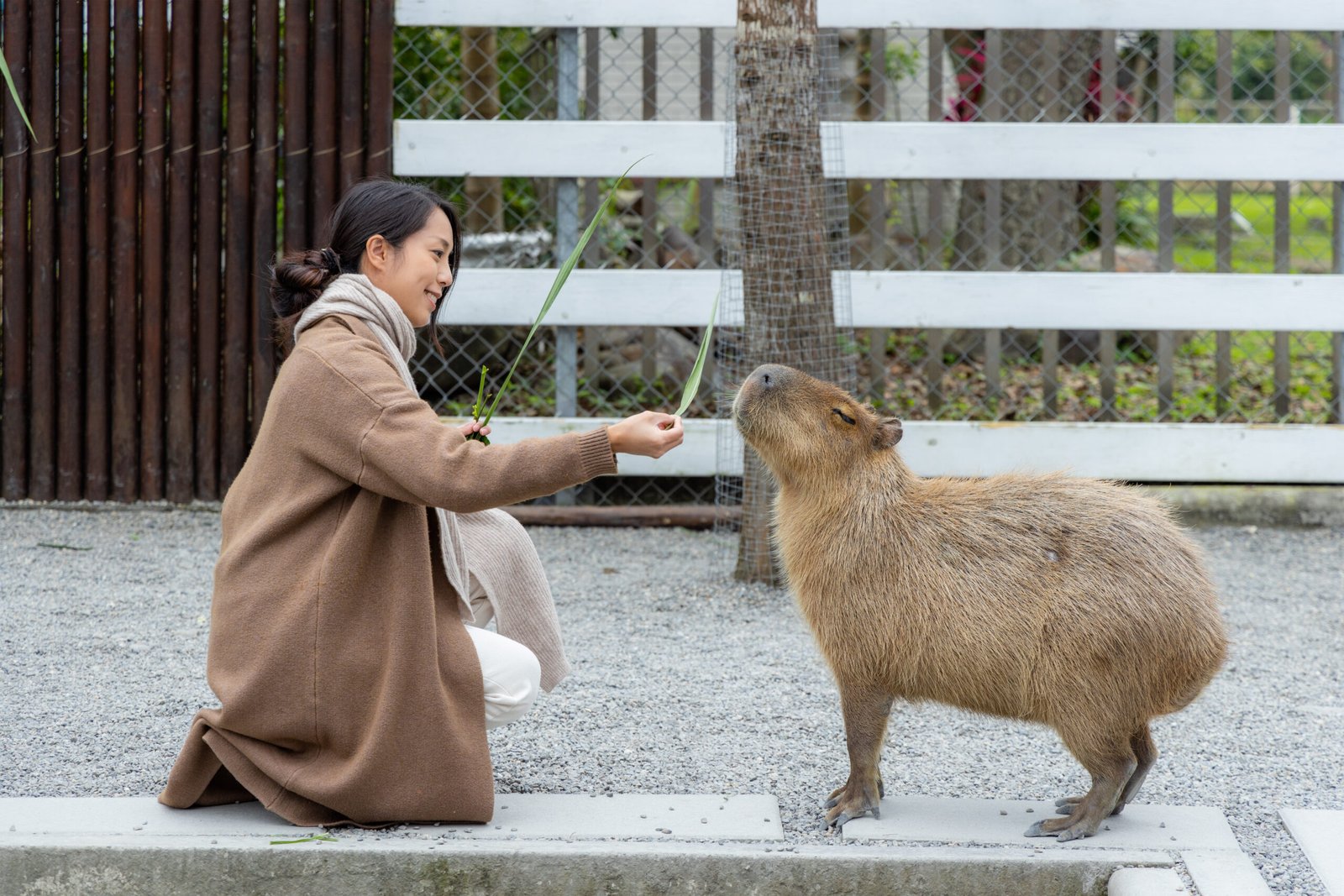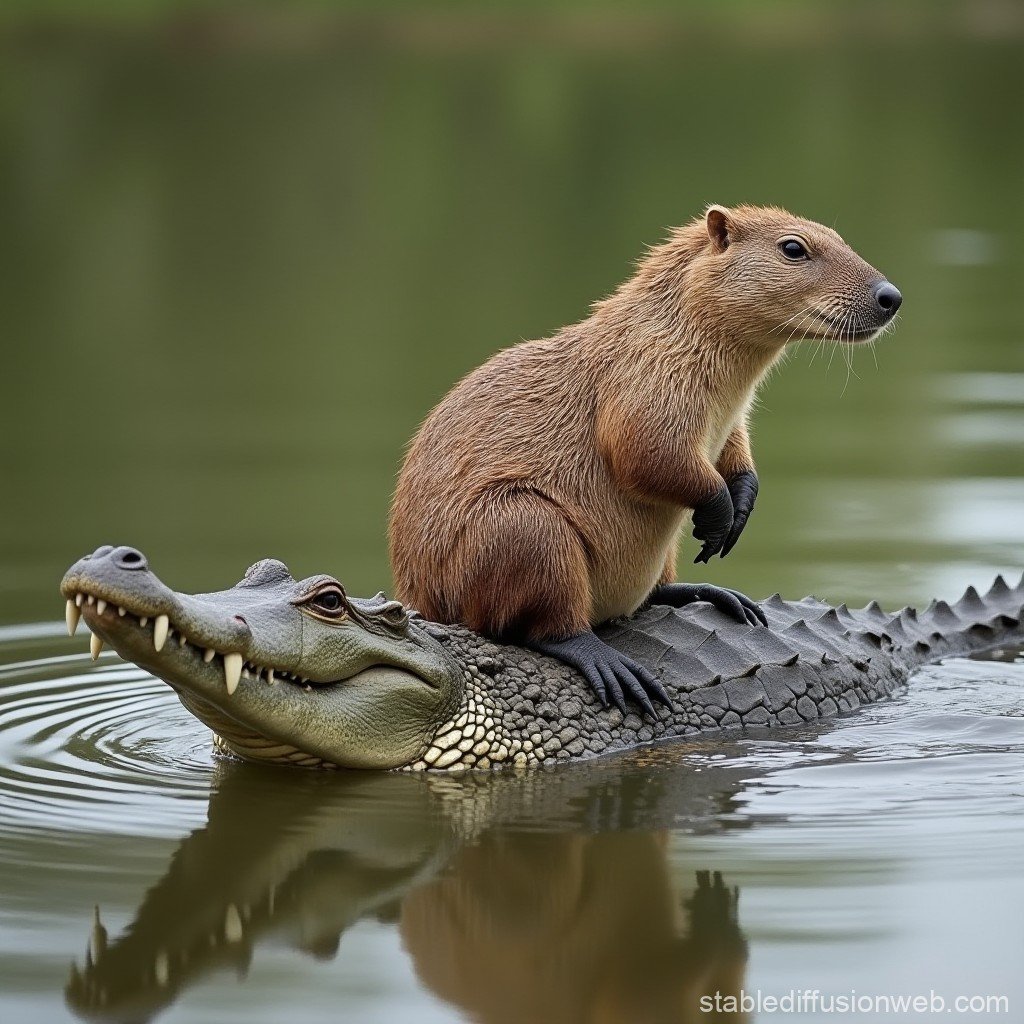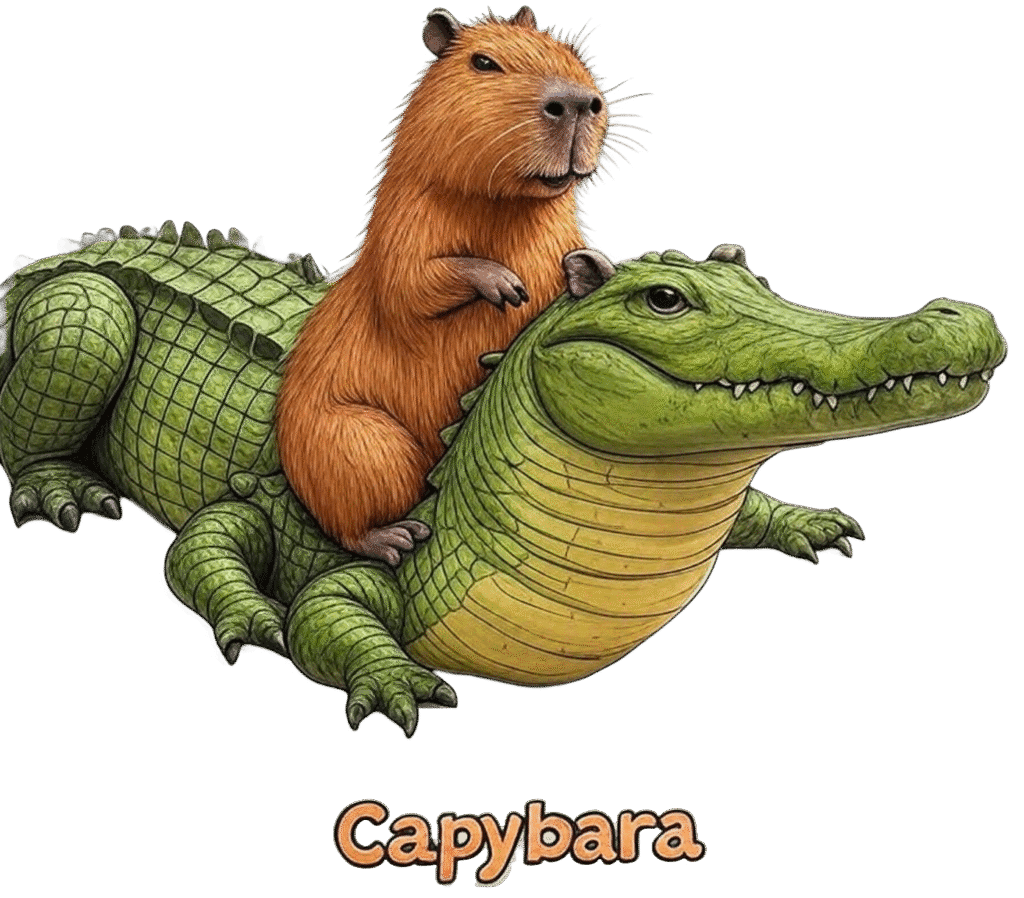The Ultimate Social Butterfly: Why Capybaras Are Masters of Friendship
Updated August 10, 2025
When you think of a social butterfly, you might picture a vivacious person flitting between groups at a party. In the animal kingdom, that title belongs to the capybara. This isn’t just because of their famously chill demeanor or their viral fame for being the friendliest animal on the planet. The capybara’s entire existence from its survival instincts to its peaceful coexistence with other species is built on the foundation of social connection.

In this deep dive into the capybara animal, we’ll explore the fascinating social life that makes them so unique. We’ll look at the incredible reasons why they are so gregarious, from their tightly knit herd structures to their ability to form bonds with animals you would never expect. You’ll learn why this gentle giant’s social habits are not just a preference, but a matter of life and death.
The Herd: A Matter of Survival and Safety
The capybara is the world’s largest rodent, but despite its size, it is a vulnerable prey animal in its native South American capybara habitat. Predators such as jaguars, anacondas, and caimans pose a constant threat. For a capybara, there is no such thing as safety in solitude. Their primary defense mechanism is not their size or their bite, but their numbers.
Capybaras live in stable, structured herds that typically consist of 10 to 20 individuals, although much larger groups can form around vital resources like water during the dry season. This group living provides crucial protection. When a capybara spots danger, it lets out a distinctive capybara noise, a sharp alarm bark that alerts the entire group. In a synchronized rush, they all flee to the safety of the nearest body of water. This collective defense strategy is so effective that a lone capybara is an incredibly rare sight and is almost always a target for predators. Their sociality is, quite literally, a matter of survival.
Beyond Their Kind: The Ultimate Peacemaker
The capybara cute image that has taken the internet by storm often shows them with other animals. And for good reason! Capybaras are remarkably tolerant and peaceful with a wide variety of creatures. You’ll find viral capybara images and capybara gifs of them with monkeys, turtles, and even birds perched on their backs, heads, and noses. This behavior is so ingrained in their nature that it has become a defining characteristic of their persona.
Their legendary ability to get along with others extends to some of the most unlikely friendships. The sight of a capybara calmly sitting next to a capybara and alligator or capybara and crocodile is a capybara fun fact that amazes people. While this might look like a death wish, it’s a testament to their non-aggressive nature. They pose no threat to these predators, and their thick, coarse skin and powerful build make them a less-than-ideal snack compared to smaller prey, so a state of mutual, if tenuous, peace can often exist.
This peaceful demeanor is part of what makes the capybara meme so popular. They represent a kind of serene, universal harmony that we all aspire to. They are a living, breathing example of a true social butterfly.
The Dynamics of a Capybara Herd
A capybara herd is more than just a random collection of individuals; it’s a society with a clear structure. Each group is typically led by a dominant male, who will often attempt to monopolize mating opportunities, though this can be difficult in larger groups. The rest of the herd consists of several adult females and their offspring.
Communication is key to maintaining this social order. Capybaras have a rich vocabulary of vocalizations, from the alarm bark we mentioned earlier to purrs, whistles, and clicks. They also use scent marking, particularly the males, who have a special scent gland called a morillo on their snout. This gland secretes a waxy substance that they rub on vegetation to mark their territory and signal their status. This complex communication system ensures that the herd stays together, cohesive, and safe.



Capybaras in Our World: From Cafes to Pets
The capybara’s friendly and social nature is a huge part of its appeal in human culture. Places like the capybara cafe in Tokyo, or the many capybara cafe Japan has to offer, have become popular destinations where people can have a close interaction with these gentle giants. Their calm temperament makes them perfect for these environments. The capybara kawaii aesthetic, with its cute and friendly vibe, has also made them a popular subject for capybara gifts and capybara drawings.
This popularity has led to an increase in searches for “capybara near me” and “capybara experience near me.” However, this fascination also raises a critical point about the responsibility of keeping a capybara as a pet. As social animals, capybaras require companionship from other capybaras to thrive. Keeping a lone capybara is considered inhumane because it deprives them of the social interaction that is as essential to their well-being as food and water. For a true social butterfly, loneliness can be a profound source of stress.
Conclusion: The Lesson of the Capybara
The capybara is an animal that teaches us the power of community. Their social nature is not just a delightful quirk; it is an evolved strategy for survival, a way to navigate a dangerous world through unity and mutual support. From their tight-knit family groups to their ability to tolerate a diverse range of other animals, they are a living testament to the idea that there is strength in numbers and peace in acceptance.
Whether you’re visiting them at a capybara hotel in a hot spring, admiring a capybara birthday cake, or simply enjoying a capybara meme, remember that this peaceful exterior is a reflection of a deeply social and complex creature. They are the true masters of friendship, and their ability to forge bonds is a remarkable capybara fact that makes them one of the most beloved and fascinating animals on the planet.
